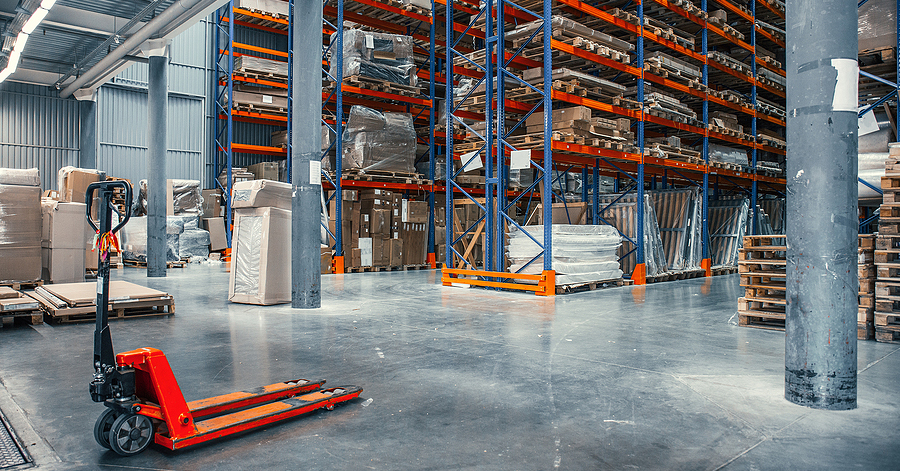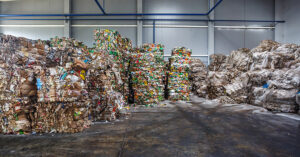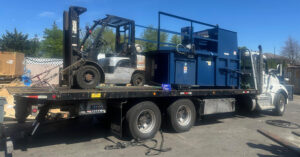Managing waste efficiently is a challenge for many businesses, particularly those dealing with high volumes of recyclable materials. Space constraints in warehouses, distribution centers, and retail locations make it essential to find compact and efficient waste management solutions.
One of the best ways to optimize space with vertical balers is by leveraging their small footprint and high compression capability to reduce waste volume while keeping operations streamlined.
Vertical balers are an ideal solution for businesses looking to maximize their available space while maintaining an effective recycling program. Unlike horizontal balers, which require a significant amount of floor space, vertical balers operate upright, making them suitable for facilities with limited room.
In this article, we’ll explore how businesses can optimize space with vertical balers, improve workflow efficiency, and enhance cost savings.
Understanding Vertical Balers
What is a Vertical Baler?
A vertical baler is a recycling machine that compresses waste materials into dense, manageable bales. These balers are specifically designed to reduce the volume of materials such as:
- Cardboard (OCC)
- Paper waste
- Plastic film and shrink wrap
- Aluminum cans and other recyclables
Unlike horizontal balers, which require more space and are often used in high-volume operations, vertical balers are more compact and designed for businesses with moderate recycling needs. Their vertical orientation allows them to fit into smaller areas while still providing powerful compaction capabilities.
Why Vertical Balers Save Space
Vertical balers are built to maximize efficiency without taking up excess space. Their design allows businesses to:
- Utilize limited floor space efficiently
- Place the baler closer to waste generation points, reducing material handling time
- Avoid the need for large open areas required by other waste management solutions
- Eliminate excessive dumpsters and collection bins that clutter the workspace
By incorporating a vertical baler into an existing recycling program, businesses can free up valuable storage and operational areas while improving waste management practices.
Key Strategies for Space Optimization with Vertical Balers
1. Strategic Placement in Facility Layout
Optimizing space with vertical balers begins with placing them in the most efficient location. Businesses should:
- Identify high-waste production areas and install balers nearby
- Position balers near loading docks or storage rooms to minimize transportation effort
- Avoid placing balers in high-traffic areas where they could obstruct operations
Proper placement not only maximizes available space but also enhances workflow efficiency by reducing the time employees spend transporting waste.
2. Selecting the Right Size and Capacity
Choosing the right vertical baler is crucial for optimizing space while maintaining productivity. When selecting a baler, businesses should consider:
- Daily or weekly waste volume – A baler that is too small may require frequent operation, reducing efficiency.
- Type of materials – Some materials, like shrink wrap or plastic film, may require specialized balers.
- Available ceiling height and floor space – Ensure that the baler fits comfortably within the designated area.
By selecting a baler suited to their specific needs, businesses can avoid unnecessary equipment taking up valuable space while maintaining optimal efficiency.
3. Enhancing Workflow Efficiency
Beyond saving space, vertical balers can also enhance overall workflow efficiency. Businesses can:
- Reduce the frequency of waste collection by compacting materials into denser bales
- Streamline loading and unloading processes with easy-to-use baler features
- Train employees to operate balers safely and efficiently, reducing downtime
When integrated properly, vertical balers become a seamless part of a facility’s daily operations, helping businesses manage waste more effectively.
4. Utilizing Stackable Storage for Bales
Once waste is compacted, businesses must store bales efficiently to maximize available space. Best practices include:
- Stacking bales securely – Properly strapping and stabilizing bales prevents unnecessary floor space usage.
- Utilizing vertical storage – If ceiling height allows, storing bales on pallets and stacking them reduces floor clutter.
- Organizing bales by material type – Keeping materials separated ensures efficient processing and easier transport.
With proper bale storage techniques, businesses can keep their space organized while preparing recyclables for collection or resale.
5. Integrating Balers with Existing Waste Management Systems
To fully optimize space with vertical balers, businesses should ensure that their balers complement their existing waste management systems. This includes:
- Using balers in conjunction with shredders, conveyor systems, or sorting stations
- Consolidating recyclable materials before transport to reduce handling time and space requirements
- Eliminating the need for multiple large dumpsters or bins, freeing up valuable workspace
By integrating vertical balers into an overall waste management strategy, businesses can significantly improve operational efficiency.
Cost and ROI Considerations
How Space Optimization Translates to Cost Savings
Space optimization leads to tangible financial benefits, including:
- Reduced facility costs – Freeing up space reduces the need for additional storage or rental space.
- Lower waste hauling expenses – Compacting waste reduces the frequency of pickups and landfill fees.
- Improved labor efficiency – Employees spend less time handling waste, allowing them to focus on core operations.
Long-Term Investment Benefits
A well-placed vertical baler is a long-term investment that can provide an excellent return. Businesses can:
- Earn revenue by selling compacted recyclable materials
- Extend the baler’s lifespan through regular maintenance and proper use
- Improve workplace safety by reducing loose waste materials and potential hazards
By optimizing space with vertical balers, companies can experience both immediate and long-term financial advantages.
Choosing the Right Vertical Baler for Your Business
Selecting the right baler depends on multiple factors, including:
- Waste volume and material type – Different balers handle different materials more efficiently.
- Key features – Automatic cycling, safety interlocks, and adjustable bale sizes improve usability.
- Available space – Ensuring the baler fits seamlessly into existing layouts prevents inefficiencies.
Partnering with an expert ensures that businesses choose the best baler for their needs.
Conclusion: Nanoia Recycling Equipment – Your Partner in Space Optimization
Vertical balers offer a powerful solution for businesses looking to maximize space, improve waste management efficiency, and reduce operational costs. By strategically placing balers, selecting the right size, and integrating them into existing workflows, businesses can unlock significant space-saving benefits.
At Nanoia Recycling Equipment, we specialize in helping businesses optimize space with vertical balers and other industrial recycling equipment. We provide custom solutions, from equipment selection and design to installation, financing, and ongoing maintenance.
If you’re looking for the perfect vertical baler solution, contact us today to learn how we can help you optimize your space and improve your waste management processes.






